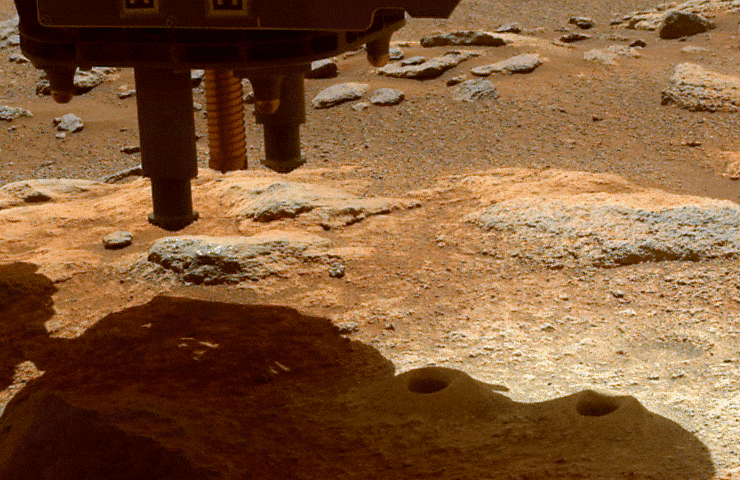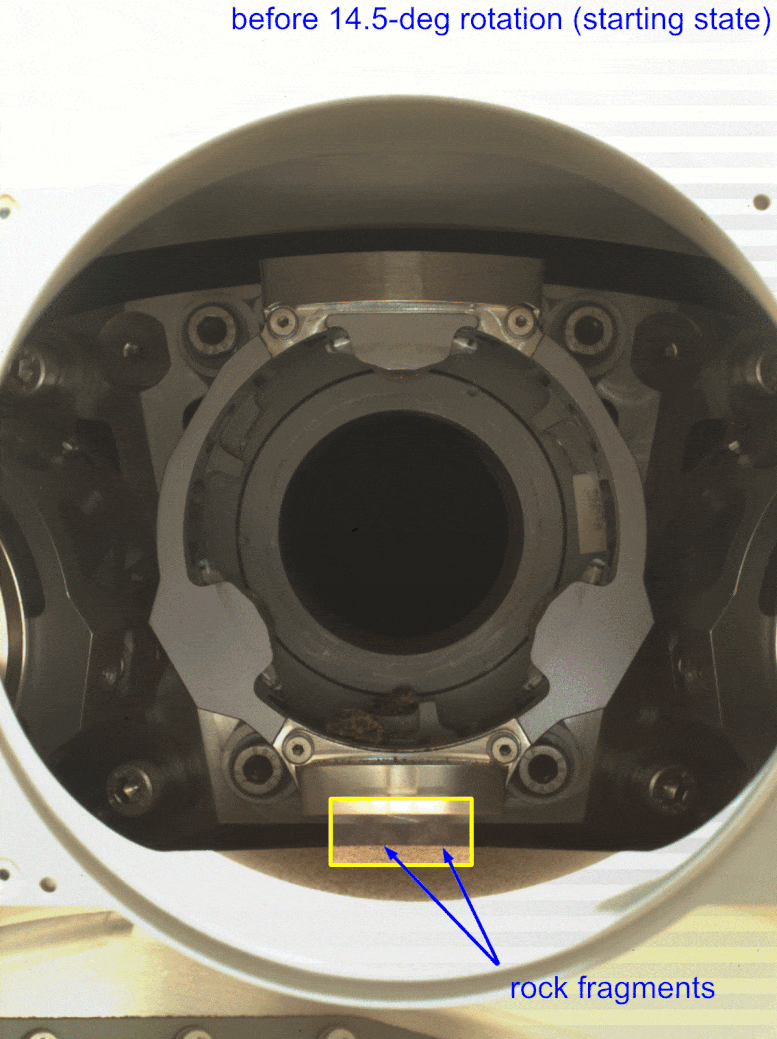NASA Mars Perseverance Rover: Ejecting Martian Pebbles

Before and After Perseverance Sample Tube Shake: An animated GIF depicts the Martian surface below the Perseverance rover, showing the results of the January 15, 2022, percussive drill test to clear cored-rock fragments from one of the rover’s sample tubes. Credit: NASA/JPL-Caltech
The team has made good progress implementing the initial recovery steps outlined last week. Our first success: The upper two pebbles were ejected from the bit carousel during a test. This is great news, as these small chunks of debris are believed to be the cause of the unsuccessful transfer of the drill bit and sample tube into the carousel back on December 29. Our second success: We appear to have removed most – if not all – of the cored rock that remained in Sample Tube 261.
Here is the latest…
Pebbles in Bit Carousel
On Monday, January 17, the WATSON camera imaged the bit carousel and its pebbles – and also took images underneath the rover to establish just what was down there before any recovery strategies were applied. Later that same Martian day, we rotated the bit carousel about 75 degrees before returning it back to its original position. WATSON imaging showed the two upper pebbles were ejected during the process. Tuesday night we also received the second set of under-rover images, which show two new pebbles on the surface, indicating the ejected pebbles made it fully through bit carousel and back onto the surface of 
Rotating Perseverance’s Bit Carousel: An annotated GIF depicts a rotational test of Perseverance’s bit carousel in which two of four rock fragments were ejected. The five images that make up the GIF were obtained by the rover’s WATSON imager on January 17, 2022. Credits: NASA/JPL-Caltech/MSSS
The other two pebbles, located below the bit carousel, remain. It is interesting to note that some of the initial trials performed on our testbed here on Earth indicate that the location of the two leftover pebbles may not pose a significant problem with bit carousel operation, but we are continuing analysis and testing to confirm this.
Remaining Sample in Tube
On Saturday, January 15, the team performed an experiment using Perseverance’s rotary-percussive drill. After the robotic arm oriented the drill with Sample Tube 261’s open end angled around 9 degrees below horizontal, the rover’s drill spindle rotated and then extended. Our remarkable Mastcam-Z instrument (which has video capability previously used to document some of Ingenuity’s flights) captured the event. The imagery from the experiment shows a small amount of sample material falling out of the drill bit/sample tube. Later that same Martian day, the bit was positioned vertically over “Issole” (the rock that provided this latest core) to see if additional sample would fall out under the force of gravity. However, Mastcam-Z imaging of 261’s interior after this subsequent maneuver showed it still…
Read More: NASA Mars Perseverance Rover: Ejecting Martian Pebbles
